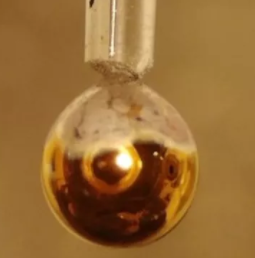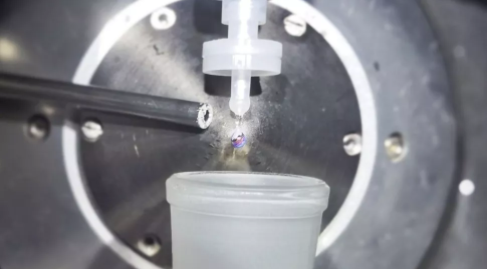Turning Water into Metal?
November 22, 2021
Water, of all-natural substances, is best known for being a liquid. Now, when physical chemist Pavel Jungwirth from the Czech Academy of Sciences in Prague managed to turn water into a shiny golden metal for a split few seconds, it captivated the scientific community.
Water (when unfiltered) allows the passage of negatively charged electrons to flow freely between its molecules, as unfiltered water contains salts. Yet, when water is pure, only the water molecules remain, as their electrons are bound to their designated atoms instead of in a free-flowing state. The theory was that if enough pressure was applied to pure water, their valence shells would be compressed into each other, with the outer layer of electrons overlapping. This compression would allow electrons to flow freely between each molecule, turning water into a metal.

One difficulty when enacting this experiment is the environment required to facilitate such a change. Jungwirth calculated that the conditions required to naturally compress water into metal would require over 15 million atmospheres of pressure, which is impossible to recreate naturally on Earth, yet completely plausible on planets such as Jupiter, Neptune, and Uranus. The solution to this heavy obstacle was to use alkali metals, such as potassium and sodium, as they are more willing to give up a valence electron when forming chemical bonds. The only problem with this was that sodium and potassium tend to be explosive when reacting with water. With this in mind, Jungwirth summarized that both he and his colleague would have to work faster than the reaction.
Now that the solution was found, Jungwirth prepped a vacuum container that contained a syringe of potassium and sodium. They then squeezed small droplets of the mixture into the container, after which they released a tiny amount of water vapor to react with the potassium and sodium. The water reacted almost instantly, as electrons from the metals rapidly combined with the water. For a few moments, the water presented itself as a shiny golden color, which they were later able to identify as metallic substance-using spectroscopy.
This study proved not only that the conditions required to transform water into a metal could be recreated on Earth, but also that it can still conduct electricity. The experiment opened our eyes to what could possibly lay within the distant planets in our solar system, without having to mount a project to obtain it physically. How this can be utilized in the future is still being speculated, but it is no doubt that this accomplishment is groundbreaking for the scientific community.
